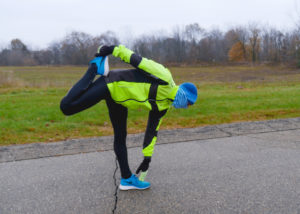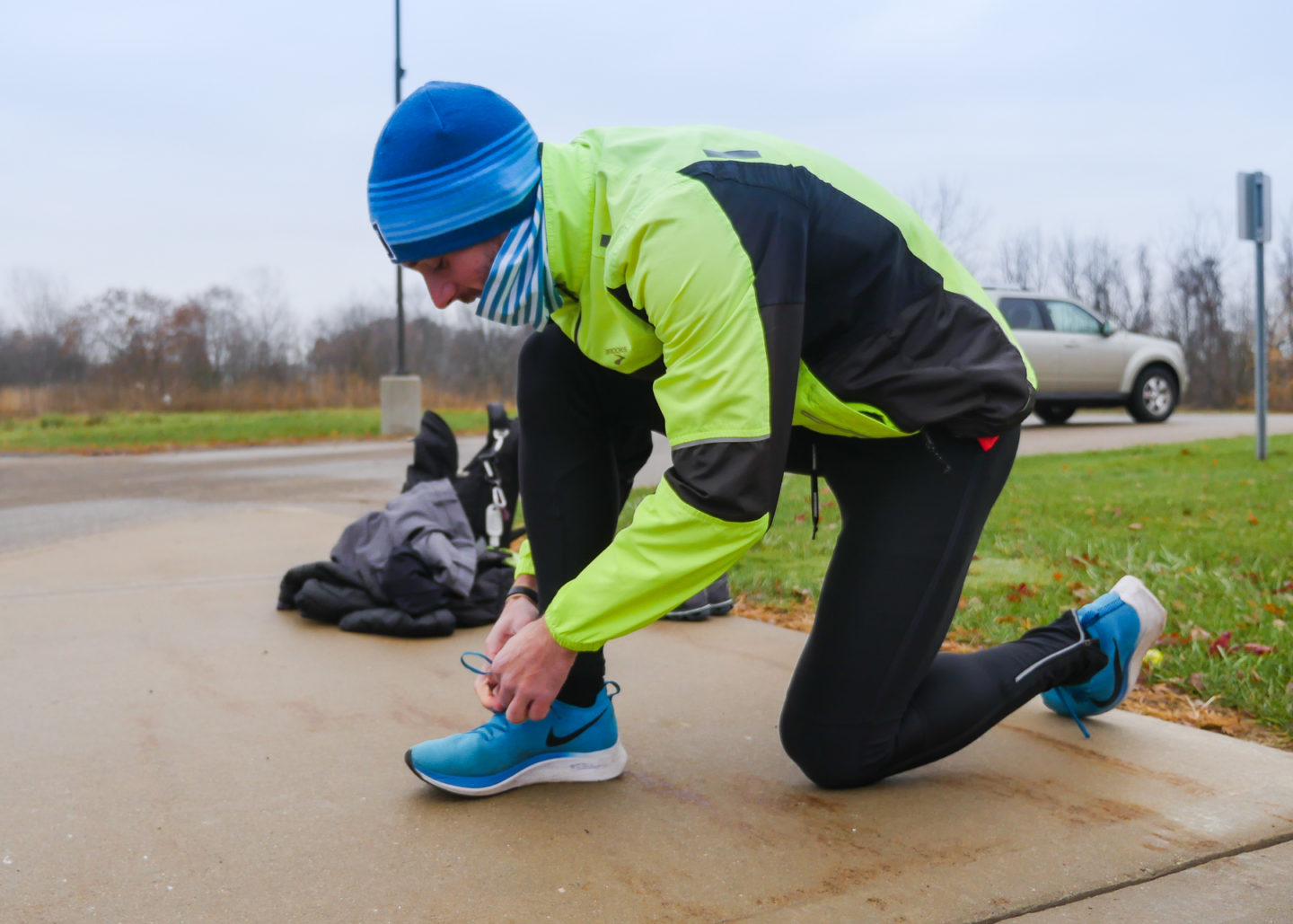Posted on November 20, 2019
Stay safe this winter with these tips for running in cold, snow and ice
From our experts: Todd Buckingham is the Mary Free Bed Sports Rehabilitation team’s lead exercise physiologist and oversees the program’s Performance Lab. A runner himself, Todd works with all levels of athletes, from beginners to NCAA Division I and professional athletes, to fuel their performance safely and effectively.
The weather is turning colder, and that means it’s time to prepare for running in freezing temperatures, snow and ice. Winter weather is a fact of life in Michigan, so a game plan for how to handle it is essential for keeping up your running routine.
Here are some tips:
Running in the dark
First, let’s shed some light on the darkness. Daylight saving time is over, so it’s dark before many of us go to work and it’s dark when we get home. If you run when it’s dark, it’s extremely important to wear clothing that’s not just bright but reflective as well. Even if you’re wearing the brightest neon jacket, you’ll still be nearly invisible to vehicles until it’s too late. Make yourself as visible as possible by wearing reflective clothing and lights, such as a headlamp or handheld lights. Remember, you don’t use lights and reflective clothing so you can see. You wear them so you can be seen.
Cold temperatures
 A proper warm-up is imperative for performance. Whether it’s inside or outside, make sure you warm up to get the blood flowing and increase your body temperature. Dynamic exercises such as high knees, butt kickers, jumping jacks and walking lunges will increase your body temperature and cause blood to flow to the muscles you will be using during your run: your legs!
A proper warm-up is imperative for performance. Whether it’s inside or outside, make sure you warm up to get the blood flowing and increase your body temperature. Dynamic exercises such as high knees, butt kickers, jumping jacks and walking lunges will increase your body temperature and cause blood to flow to the muscles you will be using during your run: your legs!
When you run, your body temperature increases, so dress like it’s about 20 degrees warmer. (You won’t heat up to the point where you sweat so much that you get chilled.) Wear technical clothing that wicks sweat away from your body – 100% merino wool fabric helps regulate body temperature and keeps you warm and dry.
Snow and ice
It’s important to choose the right footwear or you risk slipping or rolling an ankle. Choose a shoe with a lot of traction to help grip the snow or grab a set of traction devices that slip over your shoes and provide stability while running on snow and ice.
When not to run
There definitely are times when running outside isn’t advisable. The first is when it’s too snowy or icy to run safely. The most important thing a runner can do to improve his or her running is to be consistent. That’s not possible if you twist an ankle or break a bone in a fall. Sometimes it’s best to stick to a treadmill inside.
You also should stay indoors if it’s just too cold. It’s important to look at the temperature and the wind chill when making this decision. If the wind chill is below -19 degrees, frostbite can occur in less than 30 minutes. Don’t try to tough it out. Stay inside!
If you follow these simple steps, it will make running during Michigan’s dark, cold and snowy winter enjoyable!






